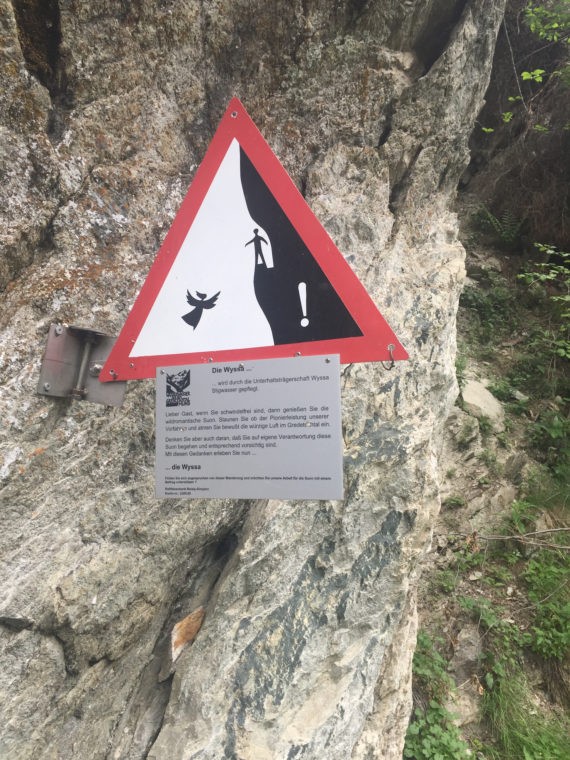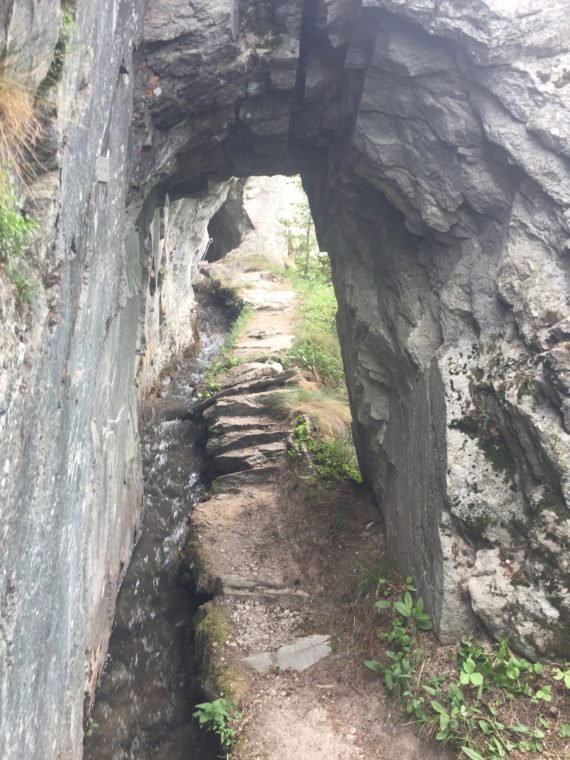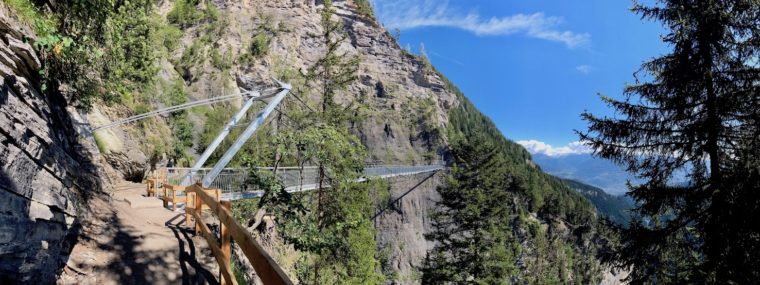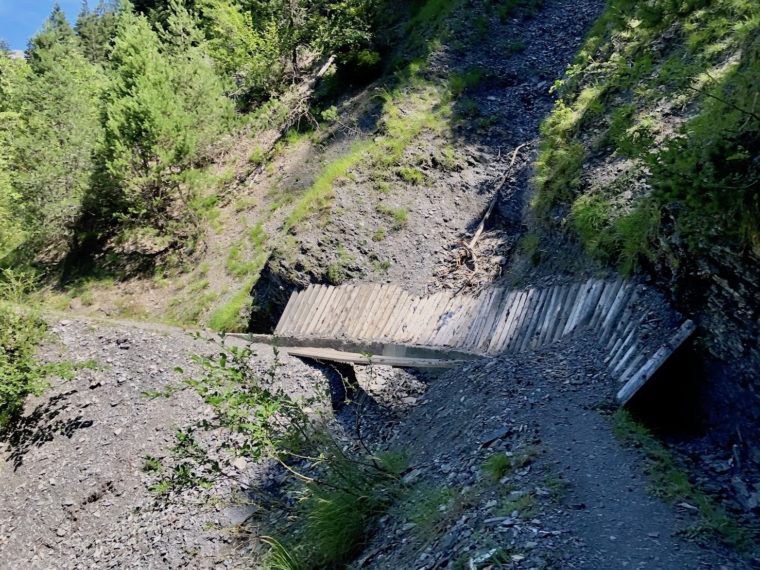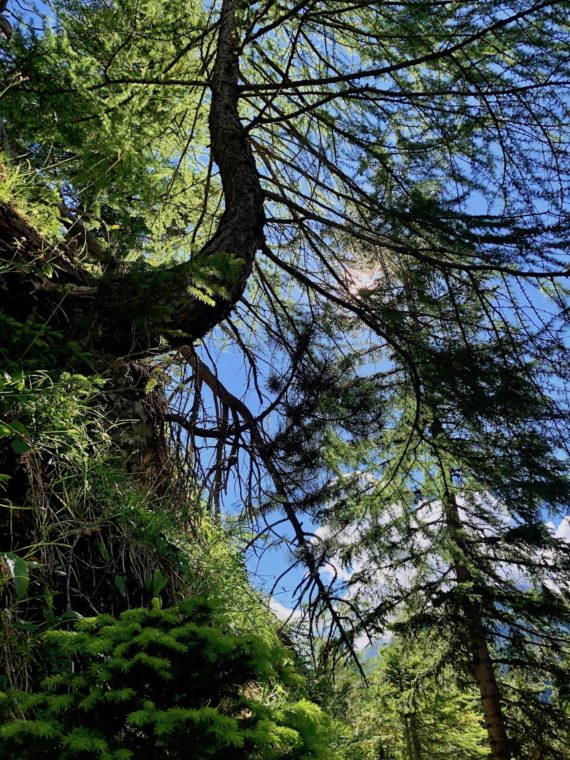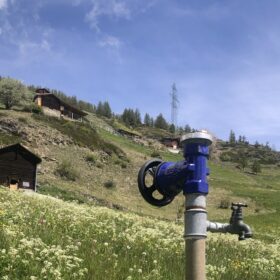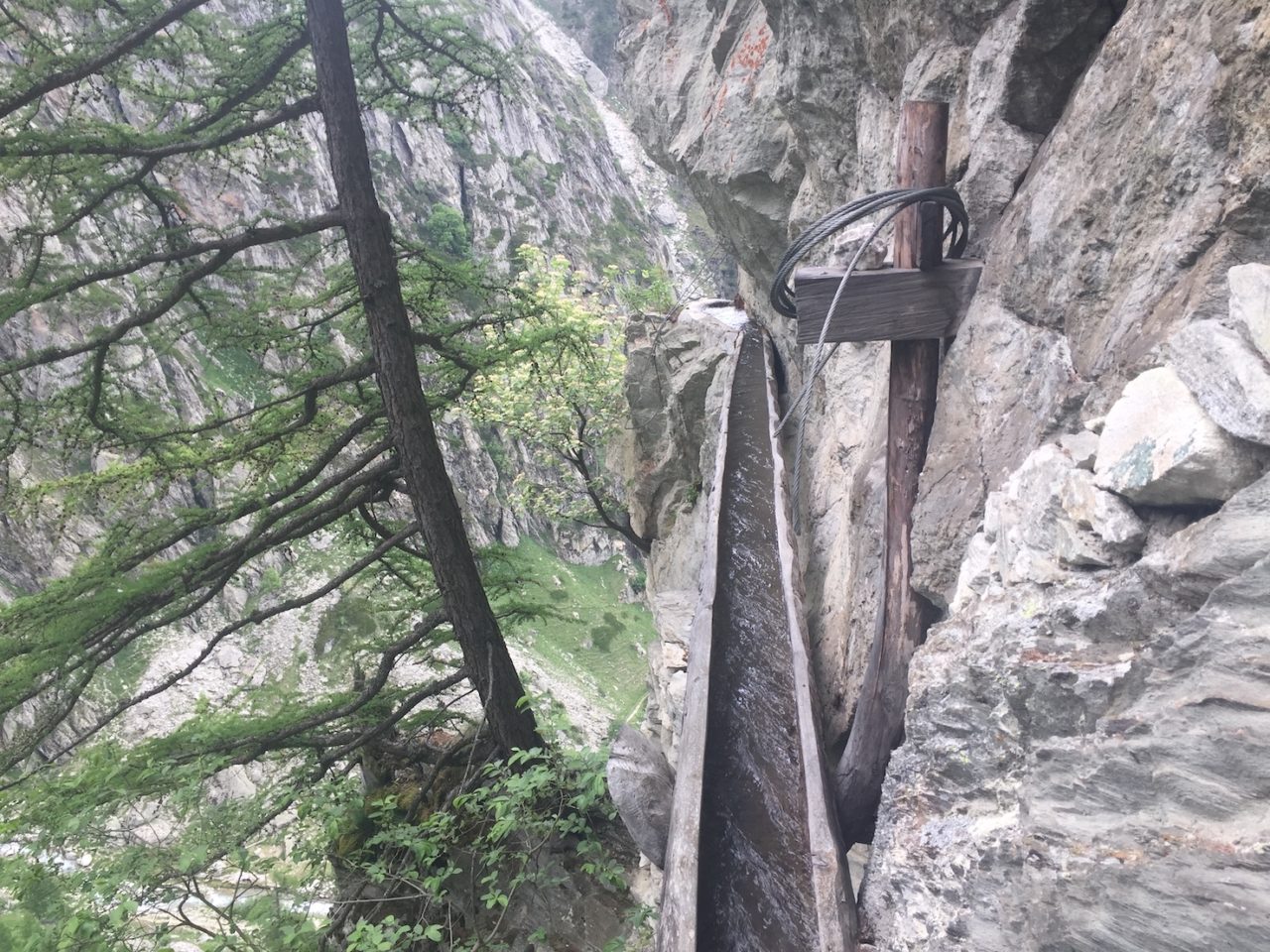
Swiss agricultural commons have overseen the management of pastures, forests, and water in the Alps for centuries. In Canton Valais, the historic irrigation systems have shaped the cultural landscape of the region as a whole. The resilience of these channels rests in part on their ability to mitigate risk, which is achieved through a particular relation to the landscape.
In Valais, centuries-old irrigation channels – locally-named ‘bisses’, ‘Suonen’, or ‘Wasserleitungen’ – source water from glacial streams, carry it along vertiginous rockfaces, and lead it across unstable terrain. They face constant risk of destruction from avalanches, rockfall, and landslides. Even in the villages, where the main channel (bisse-amont) connects to the network of secondary ditches (bisse-aval) to irrigate meadows, orchards, and vineyards, there is a risk of flooding neighbouring fields and structures if the flow of water is left to run unattended (herrenlos). Within this context, the following strategies emerge in response to risk:
Landscape resources are leveraged interdependently to combat risk
The safe operation of alpine irrigation systems requires a system of interdependent institutions of the commons, encompassing the management of alpine pastures, forests, and water. To prevent the erosion of soil-cut channels, turf is sourced from communal pastures. Flat stones are laid vertically and stabilized with soil containing a dense growth of grass and matted roots (Tretschbord). Communal forests are either cleared to create avalanche corridors (dévaloirs), or protected (forêt à ban) to prevent rockfall, landslides, and avalanches. Parts of the forest are dedicated to the provision of timber for communal works such as the construction of irrigation infrastructure.
Natural catastrophes are exploited
Larch (Larix decidua) provides a water-resistant material for hydraulic structures, and trees are identified in the communal forest to provide long straight segments of timber for channels. Other specimens, deformed by rockfall, present S-shaped trunks, the result of slow tree growth being disrupted by a natural catastrophe. Thanks to their particular morphology, these trees are used to build Krapfen: curved supports for channels suspended along cliff faces. In this sense, landscape’s intersecting timescales become embedded within the constructive scale of a timber support. Risk is not just mitigated but also exploited to produce a material and technical response.
Landscape infrastructure provides a multiplicity of risk mitigation services
The irrigation channels no longer serve the sole purpose of irrigation; they are a polyvalent technology. Indeed, an increasing number of renovations are funded in order to support stormwater management and fire prevention in alpine areas where urbanisation has greatly reduced the extent of permeable surfaces and increased demands on water for non-agricultural services (hydro-electricity production, watering of gold courses and gardens, snow production, drinking water provision in hotels, etc).
This brief overview indicates how risk is integrated within the materiality, techniques, and institutions of the irrigation systems of Valais. This cultural landscape is the repository of invaluable indigenous ecological knowledge and many lessons for sustainable risk mitigation.
Nicole de Lalouvière (E-Mail) is a doctoral fellow at the Institute of Landscape and Urban Studies (LUS), Department of Architecture (D-ARCH), ETH Zurich. She is part of the Chair of the History and Theory of Urban Design, Prof. Dr. Tom Avermaete. Nicole holds a Master of Architecture from the University of British Columbia (UBC) and has practiced landscape architecture at Vogt Landscape Architects in Zürich. Her doctoral research is a landscape and material history of the irrigation commons of Canton Valais, Switzerland.
